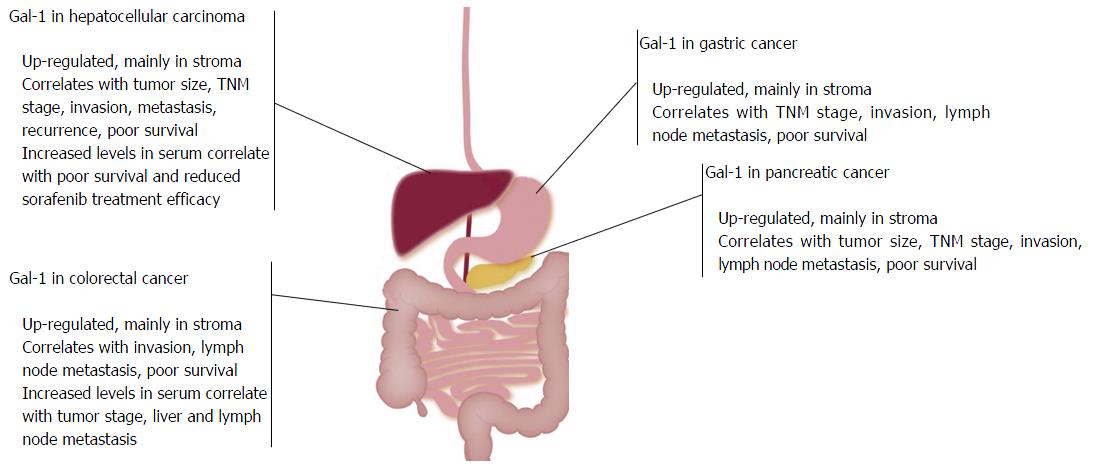Copyright
©The Author(s) 2017.
World J Gastroenterol. Aug 7, 2017; 23(29): 5266-5281
Published online Aug 7, 2017. doi: 10.3748/wjg.v23.i29.5266
Published online Aug 7, 2017. doi: 10.3748/wjg.v23.i29.5266
Figure 1 Galectin-1 expression in gastrointestinal tumors and correlation with clinicopathological parameters.
Galectin-1 is drastically up-regulated in human gastric cancer, hepatocellular carcinoma, colorectal cancer and pancreatic ductal adenocarcinoma tissues, mainly in stroma. High levels of Gal-1 correlate with tumor aggressiveness, the acquisition of a metastatic phenotype and patient poor survival. TNM: Tumor/node/metastasis; Gal-1: Galectin-1.
Figure 2 Proposed models of Galectin-1 contribution to the progression of gastric cancer, hepatocellular carcinoma, colorectal cancer and pancreatic ductal adenocarcinoma.
Galectin-1 (Gal-1) has key functions in tumor and tumor-associated stromal cells, favoring tumor cell proliferation and dissemination, angiogenesis and immunosuppression. A high exposure of Gal-1 glycan partners also contribute to tumor progression. ECM: Extracellular matrix; EMT: Epithelial-mesenchymal transition; GnTV: β1,6-N-acetylglucosaminyltransferase V; HSC: Hepatic stellate cell; PSC: Pancreatic stellate cell; TGF-β1: Transforming growth factor beta 1.
- Citation: Bacigalupo ML, Carabias P, Troncoso MF. Contribution of galectin-1, a glycan-binding protein, to gastrointestinal tumor progression. World J Gastroenterol 2017; 23(29): 5266-5281
- URL: https://www.wjgnet.com/1007-9327/full/v23/i29/5266.htm
- DOI: https://dx.doi.org/10.3748/wjg.v23.i29.5266














